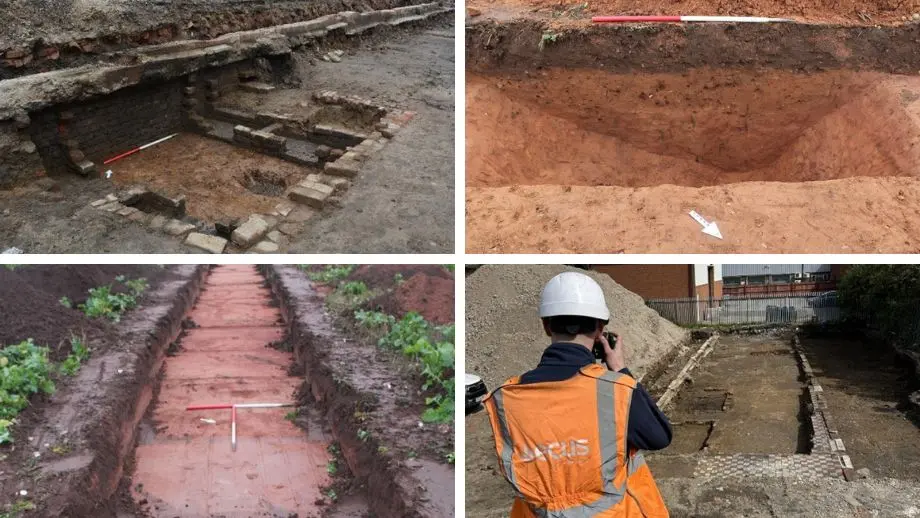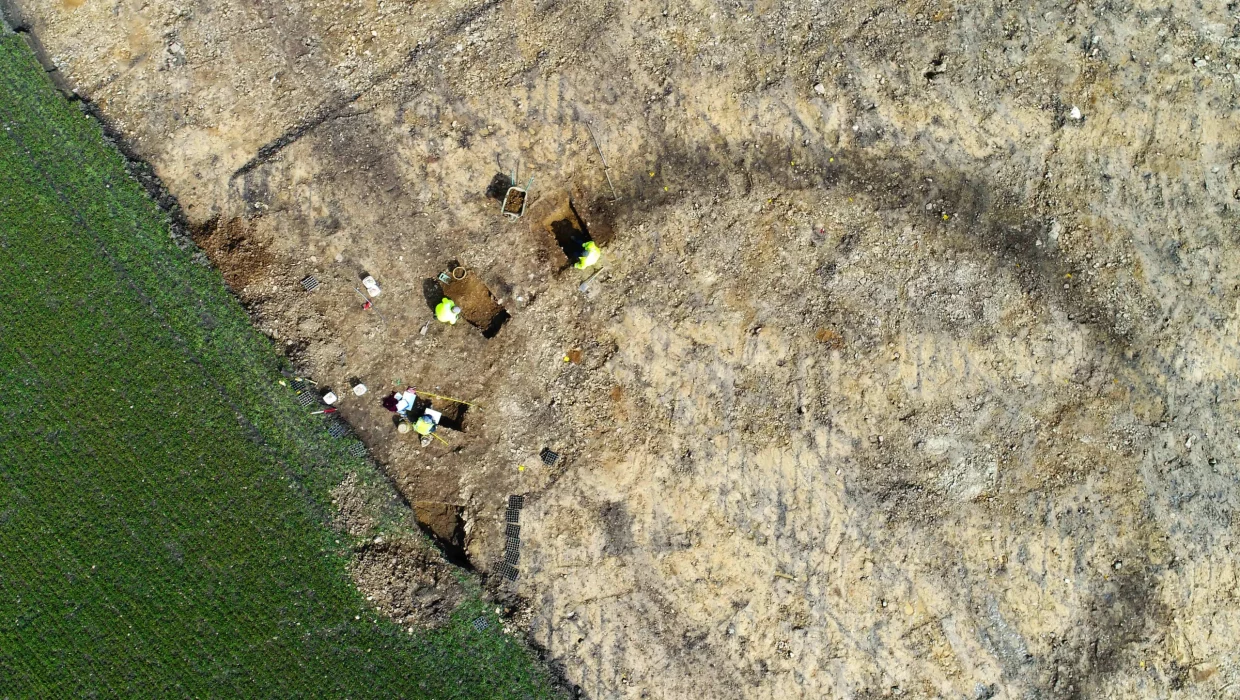Our Archaeology Supervisor Harry Mixer describes what a day as an archaeologist working for Ecus looks like, and the highlights of his day-to-day work.
No day is the same in the field of Archaeology. Projects vary from small scale watching briefs, to large evaluations with hundreds of trenches or even open mitigations covering several hectares of land. Some aspects of archaeology do remain consistent however, such as early starts (people get used to it) and being outside in a variety of British weathers (people never get used to it).
The typical day of an Archaeologist really depends on the type of project you’re working on. There are three main types of excavations for commercial archaeologists: evaluations, watching briefs and strip, map, records (open mitigation). One aspect of the job that does remain the same for all three types of excavation, is the usual sharp quip of ‘you found any gold yet?’ from each construction worker and passer-by you encounter.
Evaluations consist of trenches (usually 30 or 50 m long) being excavated which have been strategically placed, often following a geophysical survey. These differ greatly in size, I’ve worked on evaluations with as little as three trenches, but also on evaluations with thousands.
Watching briefs occur when archaeologists are supposed to monitor ground works for construction and have the authority to pause works if archaeology is encountered. These are usually undertaken by just one archaeologist, and often involve a fair bit of waiting around.
Strip, map, record excavations take place when an entire area is stripped down to the desired level, allowing entire landscapes to be revealed. These often follow on from evaluations when large amounts of archaeology have been found.
Features found on archaeological sites in the UK can date to numerous time periods – from the Paleolithic (around 800,000 years ago) to the modern day (1901 – present). Since I started my career in archaeology, I’ve excavated features dating from Neolithic, Bronze Age, Iron Age, Roman, Saxon and also medieval and post medieval time periods. No two days are the same in archaeology, one week you can be excavating a Roman ditch, next a Post-Medieval privy, and then a Saxon burial all in the space of a few weeks.
The recording methods remain the same across the excavation types, usually consisting of 10% of ditches and 50% of pits. These are increased when appropriate, such as when there’s a high chance of valuable finds. Features are excavated, photographed, drawn, recorded using the app Diggit and then planned using the GPS.
I find that one of the best aspects of working as an archaeologist, with Ecus in particular, is that during the quieter spells (usually around winter), we are able to help out the geophysics team, and also produce WSI’s, RAMs and write up reports in the office for our clients.
Archaeology is a brilliant career, and in spite of the early mornings and British weather, I find that its often the people I get to work with that make it all worthwhile. Calling a colleague over when you’ve found something that’s been in the ground for centuries (sometimes even millennia) is a feeling that is hard to describe. I suppose that’s the reasons people get into archaeology in the first place, to uncover amazing historical artefacts that enhance our understanding of the past.





